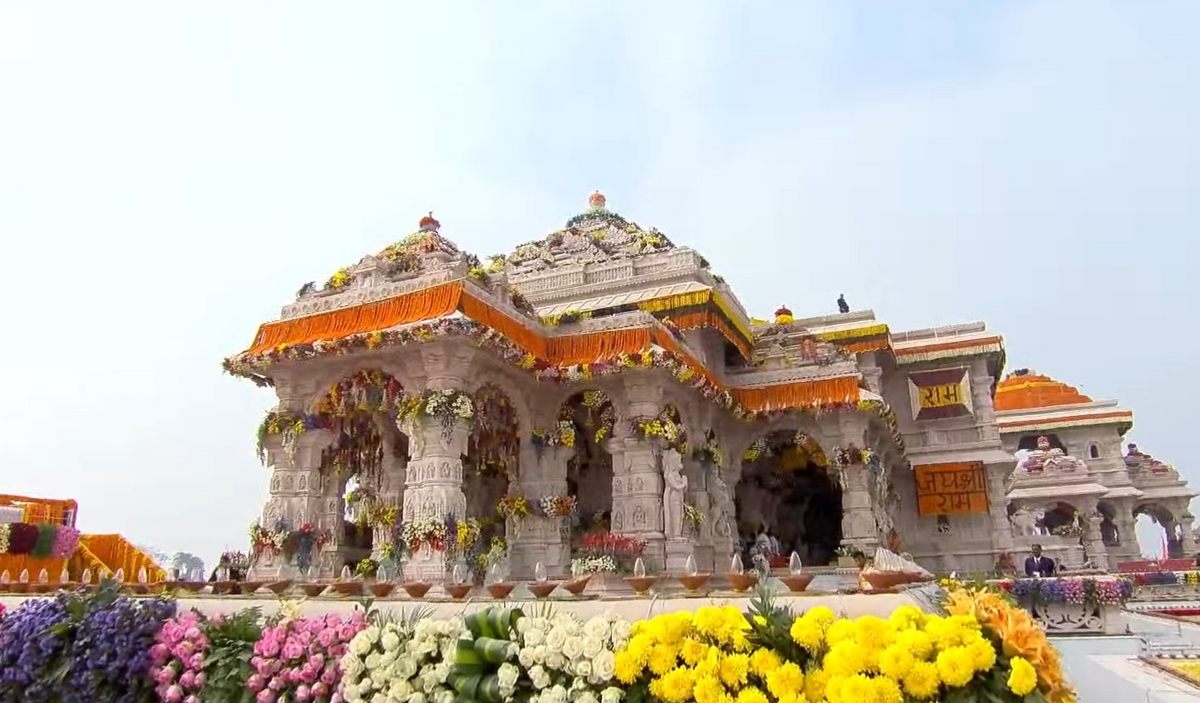Ram Mandir, Ayodhya
The Ram Mandir in Ayodhya stands as a powerful symbol of devotion and heritage, built on the sacred Ram Janmabhoomi. With its stunning Nagara architecture and deep-rooted cultural significance, the temple is a testament to India’s spiritual legacy and Lord Rama’s enduring influence.

Ram Mandir Ayodhya: History, Architecture, and Spiritual Significance
| Deity: | Lord Ram |
| Location: | Ayodhya, Uttar Pradesh |
| Best time to visit | October-March |
| Open Hours | 6:30 AM–9:30 PM |
| Popular festival | Ram Navami & Diwali |
FAQ
Where is Ram Mandir located?
Ayodhya, Uttar Pradesh
What is the origin or historical significance of the Ram Mandir?
The Ram Mandir is believed to be built on the sacred site of Ram Janmabhoomi, the birthplace of Lord Shri Rama, one of the most revered deities in Hinduism. Ayodhya has been a significant cultural and spiritual hub for centuries, with deep connections to the Ramayana. The construction of the new Ram Mandir marks a major cultural renaissance, symbolizing the rich heritage associated with Lord Rama and Ayodhya’s place in Indian history.
Who built or upgraded the Ram Mandir?
The current construction of the temple began in 2020 and is based on the original designs developed by the Sompura family of Ahmedabad in 1988, later modified according to Vastu Shastra and Shilpa Shastra. The Sompura family, known for their temple architecture, has crafted several renowned Indian temples, such as the Somnath Temple. Their involvement lends a historical continuity to the design and craftsmanship of the Ram Mandir.
What are the cultural or mythological references associated with the temple?
The temple is dedicated to Lord Shri Rama, and it stands at the site of his birthplace, as described in ancient texts. The temple symbolizes the victory of good over evil, as depicted in the Ramayana, where Lord Rama defeats the demon king Ravana. The construction of the temple after decades of religious disputes also represents a step toward religious harmony and cultural unity in India.
What are the unique points about the Ram Mandir?
The temple is constructed without the use of steel or iron, emphasizing sustainability and traditional craftsmanship. Materials like Bansi Paharpur pink sandstone, white Makrana marble, and granite were used in its construction. Unique features include the 21-foot-high granite plinth, 44 gold-coated doors, and intricately carved statues of deities on the temple’s pillars and walls. Additionally, Ram Shilas (bricks inscribed with “Shri Ram”) draw a parallel with the Ram Setu stones, intertwining modern craftsmanship with ancient symbolism.
Why is the Ram Mandir famous?
The Ram Mandir is one of the most significant Hindu temples in India, symbolizing Lord Rama’s birth and legacy. The temple’s historical and religious importance, combined with its decades-long association with religious clashes and subsequent harmony, make it a symbol of faith for millions. Its grand architecture and cultural significance have made it a beacon for devotees and tourists alike.
What is unique about the temple’s architecture?
The Ram Mandir is built in the Nagara style of temple architecture. The temple complex features a rectangular compound wall (Parkota) and a three-story temple structure, each level narrating different stages of Lord Rama’s life. The main temple consists of five mandaps (Nritya, Rang, Sabha, Prarthna, and Kirtan Mandaps), a gold-plated sanctum, and a grand Singh Dwar entrance. Its walls are adorned with carvings depicting scenes from the Ramayana, and a 7-kilometer stretch along the riverfront is being developed for visitors.
When is the best time to visit the Ram Mandir?
The best time to visit the Ram Mandir is during the cooler months, from October to March, to avoid the summer heat. Festivals like Ram Navami and Diwali bring special celebrations to the temple, making these periods ideal for witnessing the grandeur and devotion surrounding Lord Rama.
How can one reach the Ram Mandir?
The nearest airport is the Maryada Purushottam Shri Ram International Airport, currently under development, but the closest operational airport is Chaudhary Charan Singh International Airport in Lucknow, about 135 km away. Ayodhya Junction is the nearest railway station, and the temple is well-connected by road, with regular buses, taxis, and national highway access from nearby cities.
The Ram Mandir in Ayodhya stands as a monumental symbol of faith, heritage, and unity. With its deep-rooted connection to Lord Rama’s birthplace, the temple represents a confluence of history, spirituality, and architectural brilliance. As a beacon for devotees and visitors alike, it not only reflects India’s rich cultural past but also serves as a testament to the enduring devotion and reverence for Lord Rama. The temple’s completion marks the beginning of a new chapter in Ayodhya’s transformation into a modern spiritual hub.







